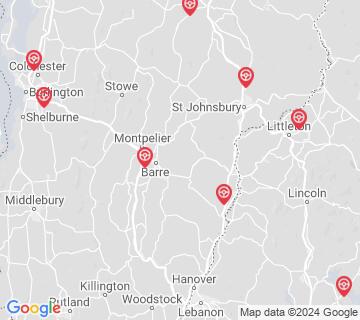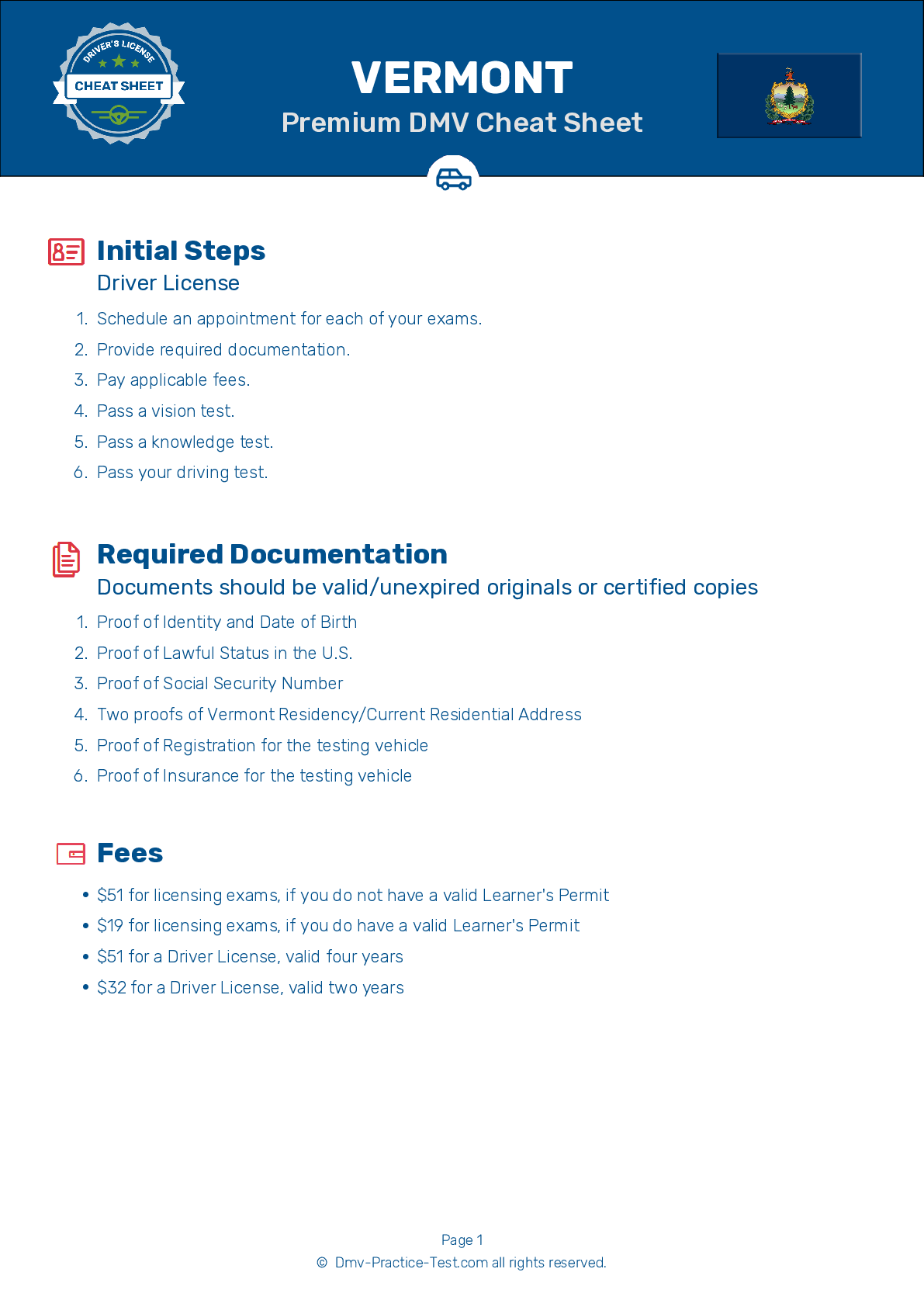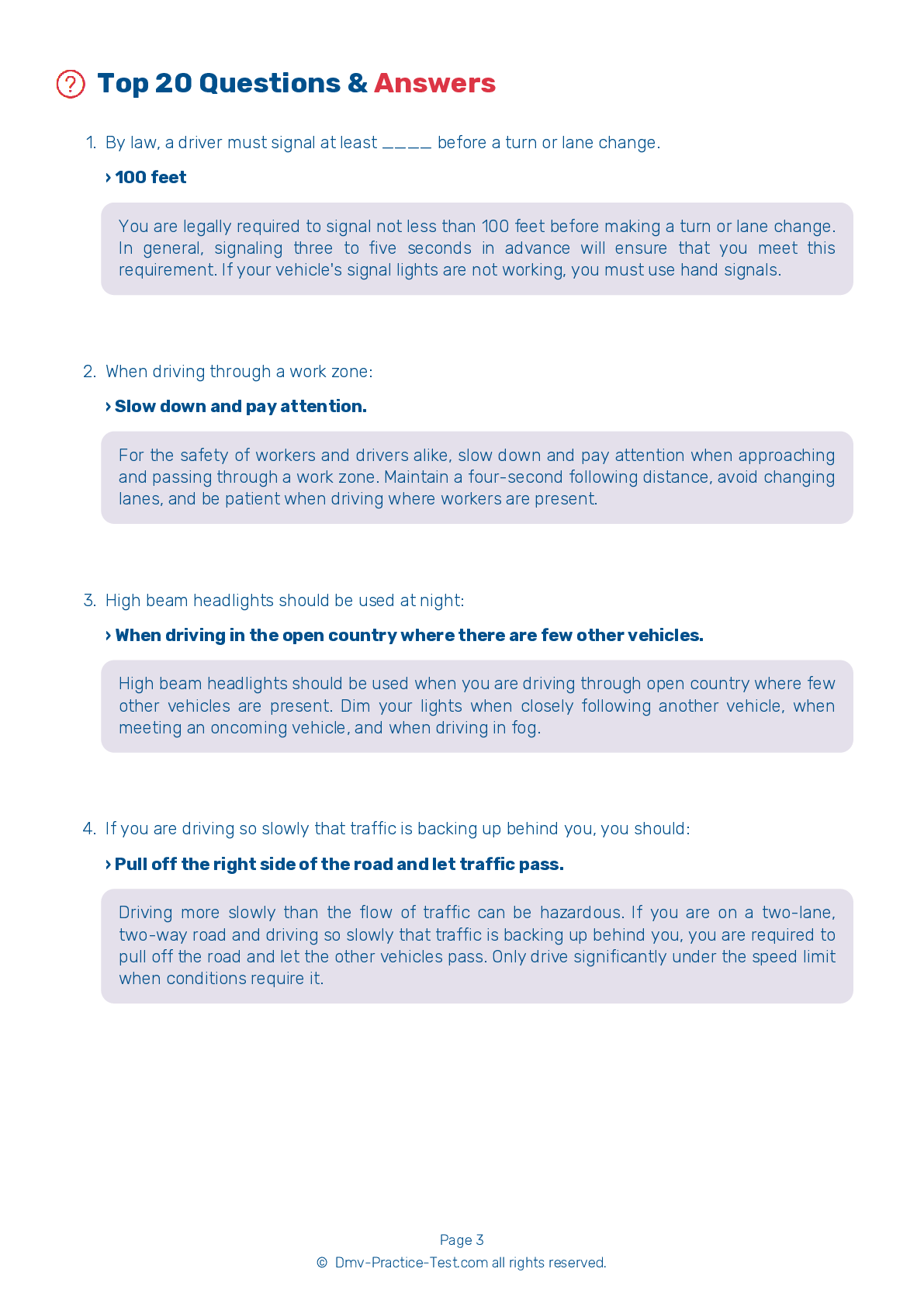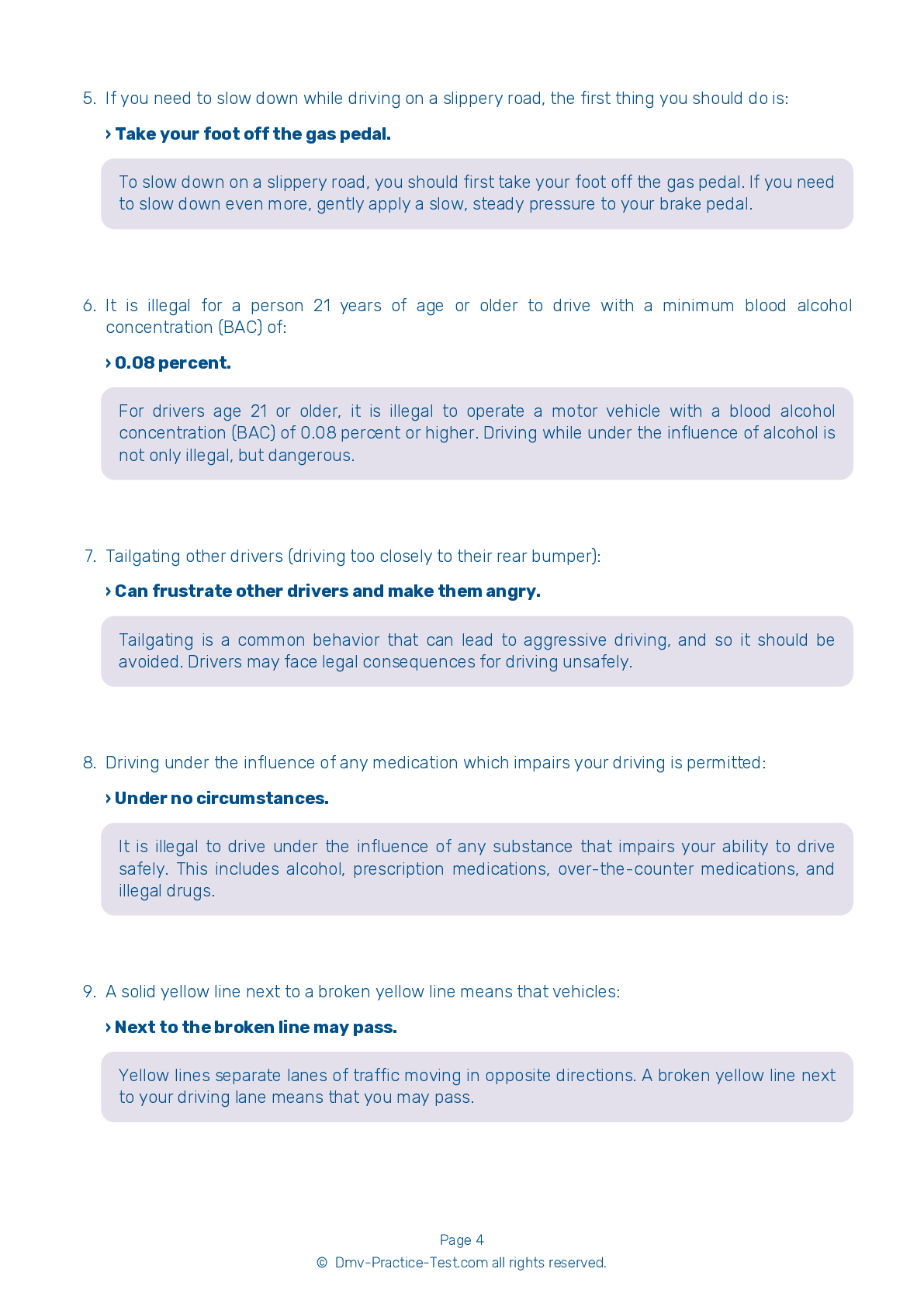FREE Vermont DMV Practice Test #13 Page 2 of 3
The Vermont DMV practise examinations have been updated for January 2025. It includes questions based on the Vermont Driver Handbook's most significant traffic signals and legislation for 2025. Use actual questions that are very similar (often identical!) to the DMV driving permit test and driver's licence exam to study for the DMV driving permit test and driver's licence exam.
On the practise exam, each question gets a tip and explanation to help you remember the concepts. The written component of the official Vermont DMV test will include questions about traffic rules, traffic signs, and driving statutes, as well as knowledge from the Driver Handbook.
To obtain a passing grade, you must correctly answer 16 of the 20 questions. Use the practise exam provided by the Vermont Department of Motor Vehicles to help you prepare for your instruction permit or driver's licence.
The DMV exam is available in several languages.
Using any kind of testing assistance will result in an automatic fail, and the DMV may take additional action against your driver's licence, so stay away from it.
7 . Downward-facing triangular signs:
Downward-facing triangular signs usually indicate that drivers should yield. Once the road is clear of traffic or pedestrians and it is safe to do so, drivers may proceed.
8 . Lanes of traffic moving in the same direction are divided by ____ lines.
Solid white lines are used to separate lanes traveling in the same direction (as well as to mark the right edge of the road). Broken white lines separate lanes traveling in the same direction and may be crossed to pass. Yellow lines separate lanes of traffic moving in opposite directions.
9 . If worried, nervous, angry, or crying, a driver:
You may not be able to drive well if you are worried, excited, crying, angry, or depressed. Emotions can distract you from your driving because your mind is focused on something else. Take time to calm down and get focused before driving.
10 . If you are driving in another driver's blind spot, you should:
Do not drive in someone else’s blind spot. Move forward or drop back so that the other driver can see you.
11 . You are coming to a railroad crossing where the crossing signals are flashing. You should:
When approaching a railroad crossing, you must stop your vehicle no closer than 15 feet from the nearest rail if an installed electric or mechanical signal is giving warning of an approaching train. Be aware of other warning signs that may indicate an oncoming train, including seeing a lowered crossing gate or hearing an oncoming train.
12 . The most common color of warning signs is:
Most warning signs are diamond-shaped and yellow with black markings. These signs warn drivers about unexpected conditions that may not be readily apparent.
13 . If you want to get off the freeway but you have missed your exit, you should:
If you miss your exit, you should take the next exit. Do not stop or back up on the highway, swerve across multiple lanes to try to make the exit at the last second, or cross over the median to turn around. All of these maneuvers are illegal and extremely dangerous.
Search the best driving school in your neighbourhood
2025 Vermont | Frequently Asked Questions
1. Not checking mirrors and blind spots before changing lanes or turning.
2. Speeding or driving too slowly for the conditions or posted speed limit.
3. Not coming to a complete stop at stop signs or red lights.
4. Incorrect signalling or not signalling at all.
5. Poor parking, especially parallel parking.
Remember, practice makes perfect, so take time to hone your skills.




